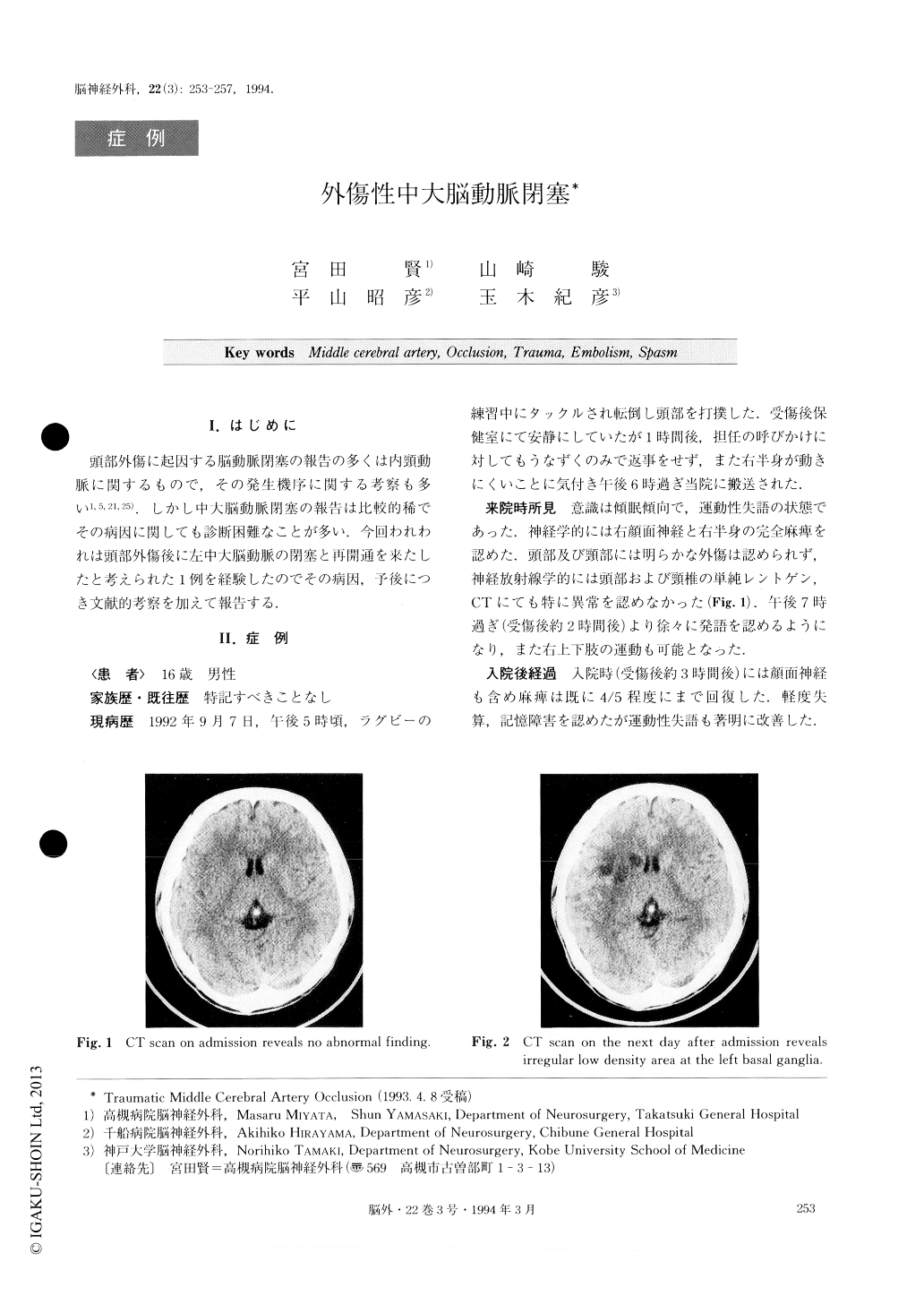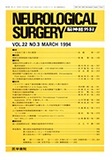Japanese
English
- 有料閲覧
- Abstract 文献概要
- 1ページ目 Look Inside
I.はじめに
頭部外傷に起因する脳動脈閉塞の報告の多くは内頸動脈に関するもので,その発生機序に関する考察も多い1,5,21,25).しかし中大脳動脈閉塞の報告は比較的稀でその病因に関しても診断困難なことが多い.今回われわれは頭部外傷後に左中大脳動脈の閉塞と再開通を来たしたと考えられた1例を経験したのでその病因,予後につき文献的考察を加えて報告する.
A 16-year-old boy developed motor aphasia and right hemiplegia after head trauma caused during Rugby football club activity. About 2 hours after trauma, theseneurological deficits improved dramatically. CT scan on admission revealed no abnormal finding. But, on the next day, CT scan revealed an irregular low density area at the left basal ganglia. Cerebral angiography showed a slight narrowing at the left carotid siphon, se-vere stenosis at M1 portion of the left middle cerebral artery with vasospasm of its distal branches and occlu-sion of the left anterior temporal artery. The extracra-nial portion of the left internal carotid artery was intact.Clinically, the patient recovered from the right hemi-paresis almost fully and was discharged after 1 month with mild dyscalculia. Three months later, follow-up angiography disclosed stenosis of the left M1 portion but the narrowing of the carotid siphon and vasospasm of the peripheral branches of the middle cerebral artery had been normalized, and the anterior temporal artery was recanalized. The pathogenesis of the occlusion is classified into 4 causes, 1) embolism from internal caro-tid artery, 2) vasospasm, 3) thrombus formation, 4) dis-section. However, the demonstration of this by angio-graphy is difficult. In our case, the injury of the intra-cranial portion of the internal carotid artery, which caused the intimal injury, spasm or thrombus forma-tion, might have happened and resulted in embolisation and recanalization of the middle cerebral artery.

Copyright © 1994, Igaku-Shoin Ltd. All rights reserved.


